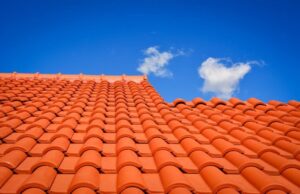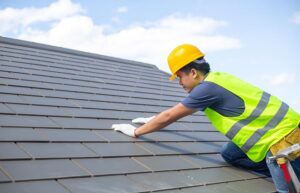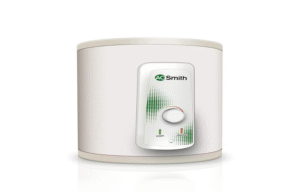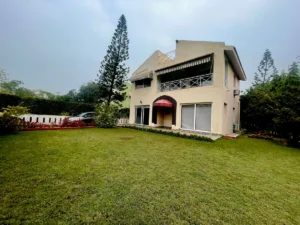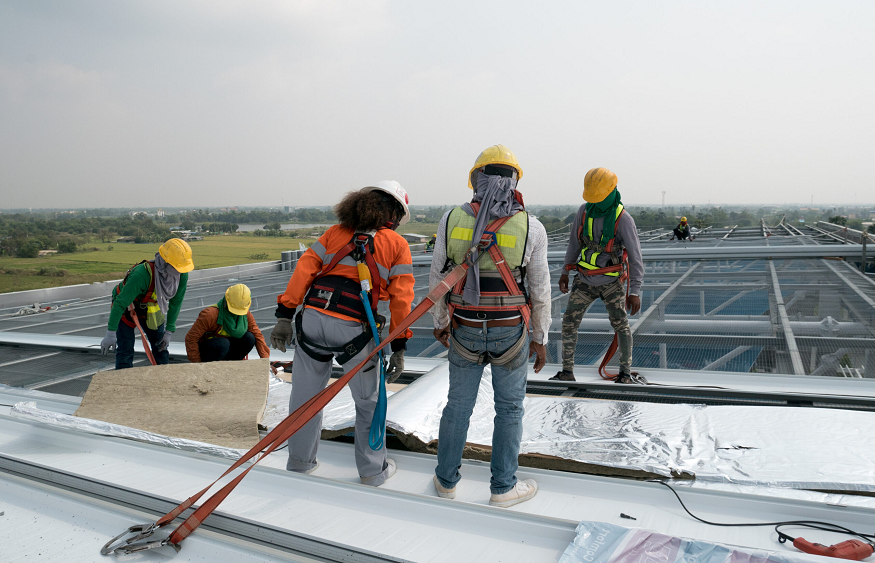
Commercial roofing is pivotal in safeguarding any commercial establishment’s structural integrity and longevity. The importance of a well-maintained roof extends beyond protection; it ensures occupant safety and asset preservation. However, maintaining commercial roofs poses challenges, ranging from weather-induced wear and tear to gradual material degradation.
Atlas Roofing offers trusted roofing services that prioritize quality and reliability if you’re situated in the following areas:
Top Class Roofing Services in San Francisco, CA
Expert Roofing Contractors in Newark, CA
Top-Notch Roofing Contractors in Livermore, CA
Reliable Roofing Contractors in Alameda, CA
When considering expert roofing services, relying on trusted professionals is crucial. Atlas Roofing has built a solid reputation for delivering exceptional roofing services, ensuring durability and longevity for your commercial property.
In this article, we delve into commercial roofing, addressing common maintenance challenges and highlighting critical indicators that signify the need for roof replacement. Irrespective of whether you own or manage commercial property, grasping these fundamentals is essential for securing your investment and the well-being of your building’s occupants.
Visible Damage
Cracks and Tears in Roofing Material
If you notice cracks or tears in your roofing material, your roof has been compromised. These openings can allow water to seep through, leading to further damage. Regular inspections can help identify such issues early on. Addressing these problems promptly is crucial to prevent extensive structural damage.
Signs of Water Damage and Leaks
Water stains on your ceilings and walls are telltale signs of roof leaks. These leaks can lead to extensive interior damage if left untreated. Addressing them promptly is crucial to avoid costly repairs down the road. Additionally, identifying the source of the leaks and addressing it during the replacement process is essential to ensure a long-lasting new roof.
Deterioration of Roof Flashing
Roof flashing plays a vital role in preventing water intrusion. If you observe deterioration in your roof flashing, it’s a sign that your roof’s protective barriers are failing. Replacing the flashing and assessing the overall condition of your roof is essential. Properly installed and maintained flashing is critical for the longevity of your new roof and overall structural integrity.
Age of the Roof
Expected Lifespan of Common Roofing Materials
Different roofing materials have varying lifespans. For instance, asphalt shingles typically last 20-25 years, while metal roofs can endure 40-70 years. Knowing the lifespan of your specific roofing material helps you plan for replacement accordingly. When choosing a new roof, consider materials with a longer lifespan for increased durability.
Correlation Between Age and Roof Performance
As your roof ages, its performance tends to decline. It becomes more susceptible to damage and leaks. Regular evaluations can help gauge the impact of aging on your roof’s performance. A new roof not only improves performance but also enhances your property’s overall appearance and value.
Evaluating Wear and Tear Over Time
Monitoring the wear and tear of your commercial roof over time is essential. Minor issues can escalate quickly, leading to costly damage. Consistent maintenance and inspections can extend the lifespan of your roof, but replacement may eventually become unavoidable. When replacing your roof, consider low-maintenance materials to reduce long-term costs.
Energy Efficiency Decline
Increased Heating and Cooling Costs
If your energy bills have steadily risen, your roof may be to blame. A compromised roof can lead to poor insulation, making maintaining a comfortable indoor temperature harder. Replacing your roof with energy-efficient materials can help reduce energy consumption. Additionally, invest in proper attic insulation to maximize energy savings and comfort.
Importance of Roof Insulation
Proper insulation is critical to maintaining energy efficiency. A worn-out roof can result in heat or cold air escaping, forcing your HVAC system to work harder. Replacing your roof with modern insulation materials can significantly affect energy savings. Moreover, consider roof ventilation options to enhance energy efficiency and reduce cooling costs.
Detecting Thermal Inefficiencies
Consider conducting an infrared thermal imaging assessment to detect thermal inefficiencies in your roof. This technology can pinpoint areas where your roof is losing heat or cooling, helping you decide if replacement is necessary. Prioritize addressing these inefficiencies during the replacement process to maximize the energy efficiency benefits of your new roof.
Frequent Repairs
Assessing the Cost-Benefit of Repairs vs. Replacement
While minor repairs can be a temporary solution, the cumulative cost of frequent repairs may exceed the price of a new roof. Consider the long-term financial implications and durability of a replacement. A new roof provides peace of mind and a warranty, reducing the risk of ongoing repair expenses.
The Impact of Repeated Repairs on Roof Integrity
Each repair may compromise the integrity of your roof further. It’s essential to assess whether the structure can continue to support repairs or if it’s time for a complete replacement. Prioritize the long-term health and safety of your building by opting for a new roof when repairs are no longer a viable solution.
When Repairs No Longer Suffice
When the frequency and scale of repairs become overwhelming, it’s a clear sign that your roof has reached the end of its lifespan. Investing in a new roof can provide peace of mind and long-term stability. With a new roof, you eliminate the uncertainty of when the next repair will be needed, allowing you to focus on your business without disruptions.
Internal Signs of Roof Problems
Water Stains on Ceilings and Walls
Water stains on interior surfaces are often a result of roof leaks. These stains can be unsightly and may indicate more extensive structural damage. Replacing your roof can prevent further water intrusion. Additionally, repairing any interior damage during the roof replacement process ensures a fresh start for your building’s interior aesthetics.
Mold and Mildew Growth
Excess moisture from roof leaks can create an environment conducive to mold and mildew growth. Not only can this harm your property, but it can also pose health risks to occupants. Addressing the root cause by replacing the roof is essential. After roof replacement, consider mold remediation to ensure a safe and healthy indoor environment.
Structural Sagging and Stress
If you notice structural sagging or stress in your building, it may be linked to an aging or compromised roof. A new roof can provide the necessary support to maintain the structural integrity of your property. Additionally, assess and repair any structural damage caused by the old roof during the replacement process to ensure the safety and stability of your building.
Drainage Issues
Pooling Water on the Roof Surface
Pooling water on your roof indicates that your drainage system is malfunctioning. This can lead to roof deterioration and leaks. Ensuring proper drainage is essential for your roof’s longevity. Consider installing a modern, efficient drainage system during the replacement to safeguard against future drainage issues.
Clogged or Inefficient Drainage Systems
Over time, debris and leaves can clog your roof’s drainage system, impeding water flow. Regular maintenance and cleaning can help prevent these issues. However, if drainage problems persist, it may be time to consider a replacement. When replacing your roof, opt for a drainage system designed for easy maintenance to prevent future clogs and ensure optimal water flow.
The Role of Proper Drainage in Roof Longevity
Proper drainage is crucial to extending the life of your commercial roof. Without it, water can accumulate, leading to structural damage and interior issues. A new roof with an efficient drainage system can help safeguard your property. After the replacement, establish a regular maintenance schedule to keep your drainage system functioning optimally.
External and Environmental Factors
Damage from Storms and Extreme Weather
Harsh weather conditions, including storms, hail, and strong winds, can cause extensive damage to your roof. Frequent assessments following severe weather events are essential to promptly identify and address any issues. Consider reinforcing your new roof to withstand local weather conditions better.
Impact of Nearby Trees and Vegetation
Overhanging trees and branches can scrape, puncture, or damage your roof’s surface. Regular tree trimming and maintenance can mitigate these risks, but a new roof may be necessary if the damage is extensive. During roof replacement, explore tree management solutions to prevent future damage from nearby vegetation.
Considerations for Local Climate and Weather Patterns
Your commercial roof’s longevity can vary depending on your local climate and weather patterns. Areas prone to extreme temperatures or heavy rainfall may require more frequent roof replacements. Understanding your region’s specific challenges is crucial for proper roof maintenance and replacement planning. Consult with local roofing experts to choose materials and designs best suited to your climate for a longer-lasting roof.
In conclusion, recognizing the unmistakable signs that your commercial roof is due for replacement is essential for preserving the integrity of your property and avoiding costly repairs. Regular inspections, proactive maintenance, and promptly addressing these signs are vital in extending your roof’s lifespan. When the time comes for replacement, choose durable materials and incorporate modern features to ensure long-term protection and energy efficiency. Secure your investment and protect your commercial space before the damage becomes irreparable.

